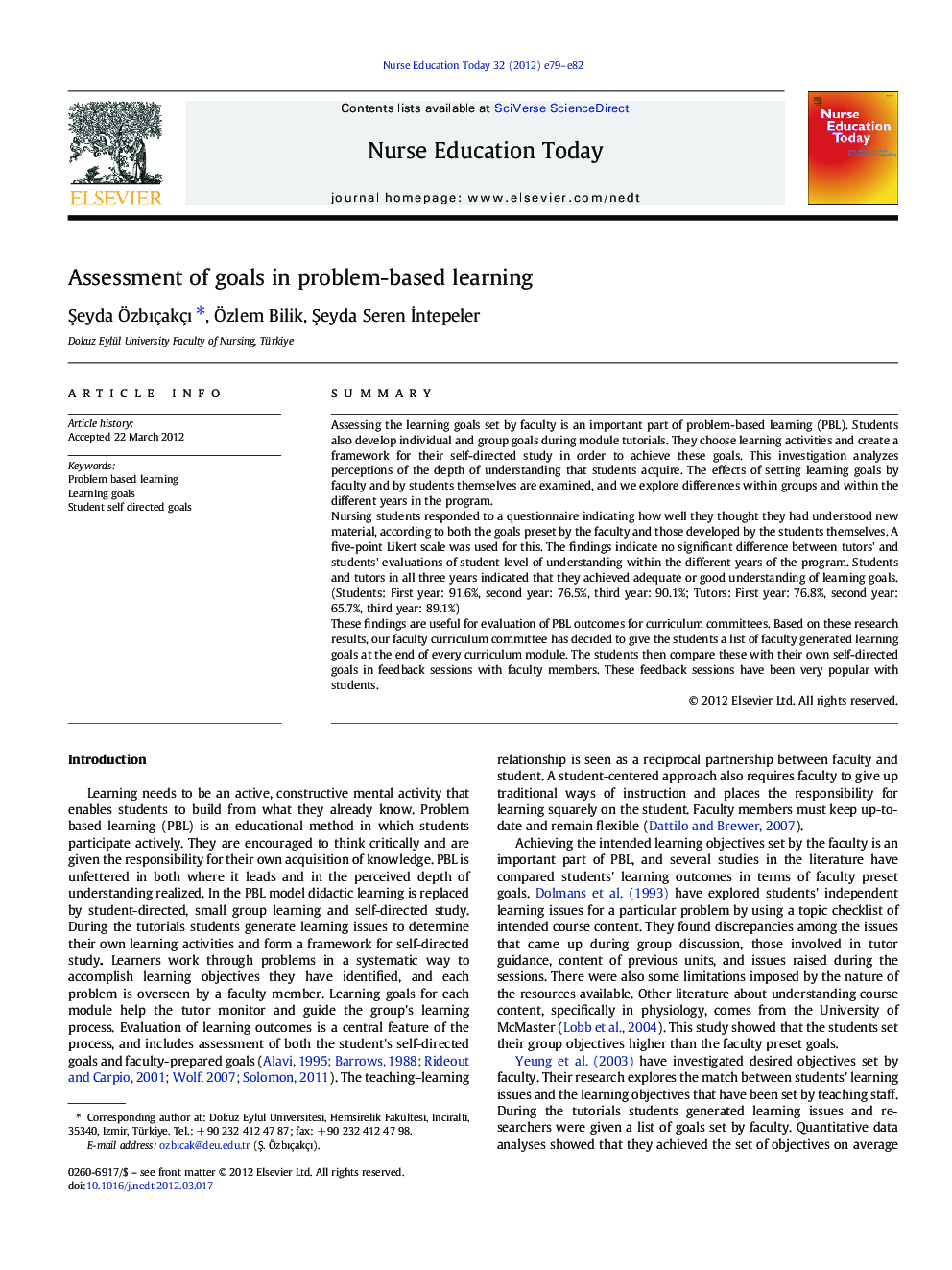| Article ID | Journal | Published Year | Pages | File Type |
|---|---|---|---|---|
| 368747 | Nurse Education Today | 2012 | 4 Pages |
SummaryAssessing the learning goals set by faculty is an important part of problem-based learning (PBL). Students also develop individual and group goals during module tutorials. They choose learning activities and create a framework for their self-directed study in order to achieve these goals. This investigation analyzes perceptions of the depth of understanding that students acquire. The effects of setting learning goals by faculty and by students themselves are examined, and we explore differences within groups and within the different years in the program.Nursing students responded to a questionnaire indicating how well they thought they had understood new material, according to both the goals preset by the faculty and those developed by the students themselves. A five-point Likert scale was used for this. The findings indicate no significant difference between tutors' and students' evaluations of student level of understanding within the different years of the program. Students and tutors in all three years indicated that they achieved adequate or good understanding of learning goals. (Students: First year: 91.6%, second year: 76.5%, third year: 90.1%; Tutors: First year: 76.8%, second year: 65.7%, third year: 89.1%)These findings are useful for evaluation of PBL outcomes for curriculum committees. Based on these research results, our faculty curriculum committee has decided to give the students a list of faculty generated learning goals at the end of every curriculum module. The students then compare these with their own self-directed goals in feedback sessions with faculty members. These feedback sessions have been very popular with students.
